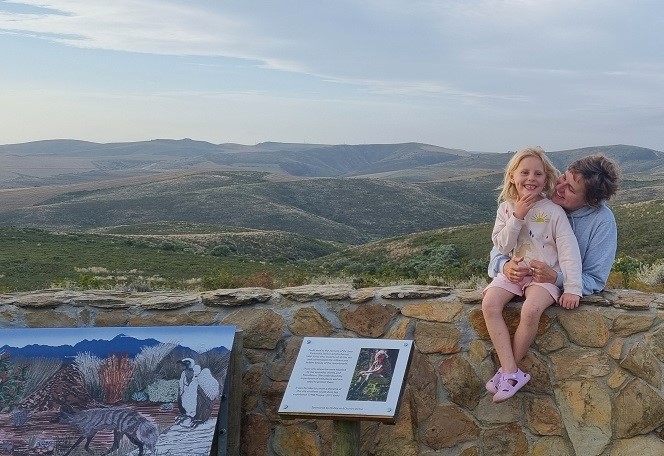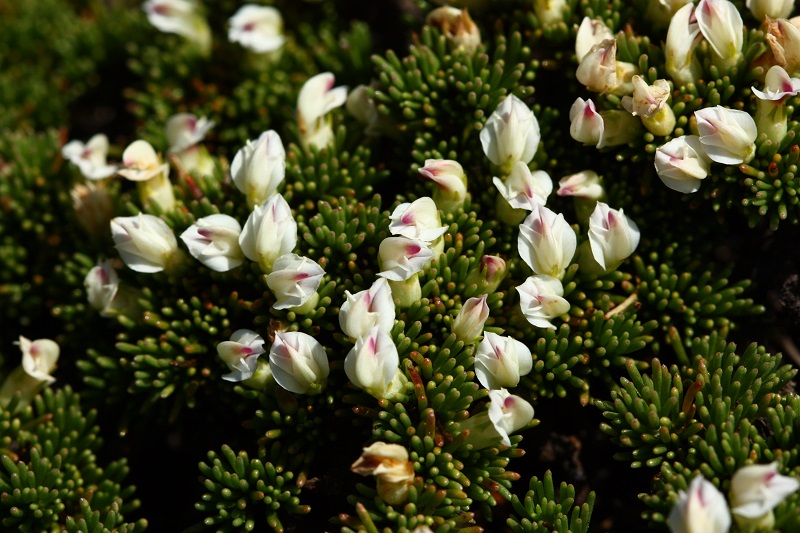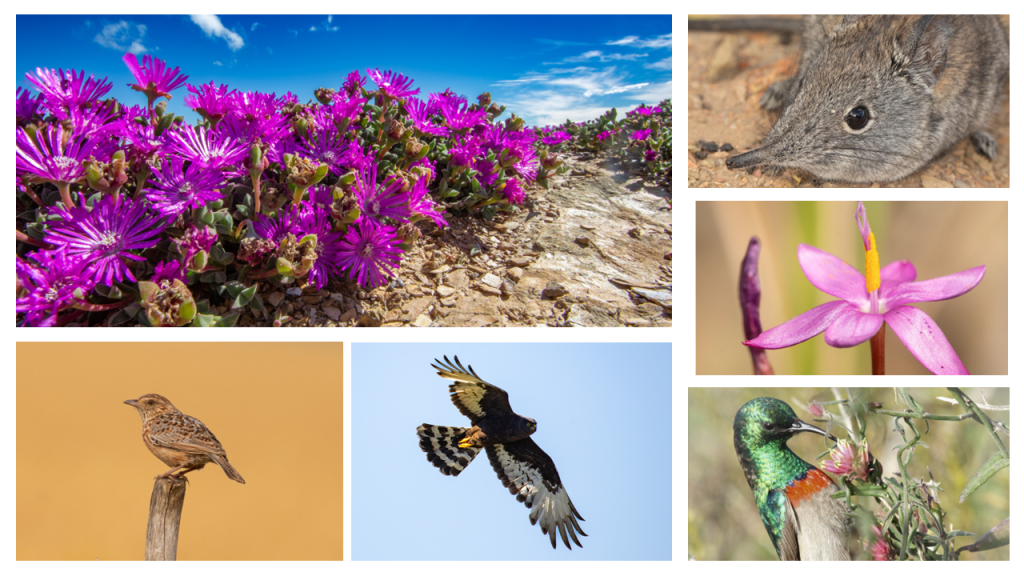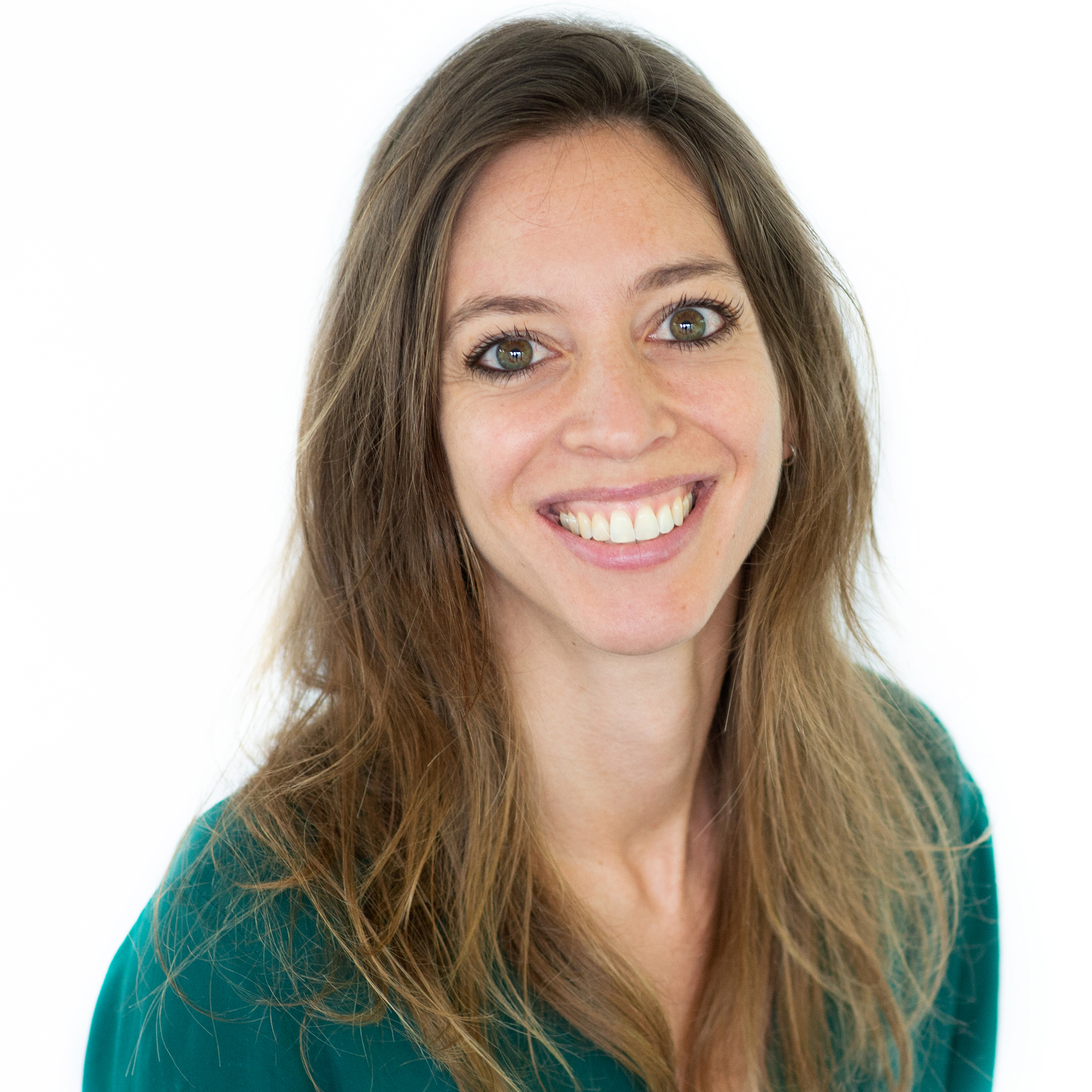Sustainable rattan harvesting: these farmers show that it…
24 April, 2025
Friday 03 may 2024
Header photo: © Odette Curtis-Scott
Renosterveld translates to ‘rhino veld’, as where black rhinos lived in the area just 300 years ago (until they were all exterminated by European settlers). It is a unique lowland ecosystem that is part of the Cape Floral Kingdom, the richest of the six plant kingdoms in the world. Due to transformation for agriculture, only five percent of the original extent of renosterveld remains.
The urgency to protect renosterveld is high, Odette Curtis-Scott, director of Overberg Renosterveld Conservation Trust says. ‘People used to joke that renosterveld is the ugly sister of fynbos [the dominant heathland found within the Fynbos Biome]. Many viewed it as a homogenous, boring, grey shrubland, but it is so much more. This is especially obvious in the springtime, when the ecosystem comes alive. It hosts so many special and endemic species, like the black harrier, a bird species that already lost a significant proportion of its breeding habitat through habitat transformation. What makes it most unique, however, is its exceptional floral diversity, which is arguably the highest ranking among all Mediterranean ecosystems. If we do not act now to protect renosterveld, we will lose these species before half of them even have names.’
Odette Curtis-Scott, director of ORCT‘If we do not act now to protect renosterveld, we will lose these species before half of them even have names.’
Even though she devotes her life to protecting the ecosystem nowadays, Odette did not start her career with a particular interest in the renosterveld. ‘During my master’s study, I was doing research on the endangered black harrier. I studied their breeding grounds in renosterveld, and found myself spending days here, observing the landscapes and waiting to see if harriers were present or not. I then realised for the first time the extent of degradation of these ecosystems; how much overgrazing there was by sheep and cattle, for example. I also noticed the lack of appropriate fire management, which is important since habitats in this region require occasional fires. I soon realised that a big part was due to the farmer’s negative perspective of renosterveld. They called it ‘bossieveld’ or ‘uitvalgrond’ – the latter directly translated as ‘wasteland’, basically. And even though renosterveld was known to be very rich in biodiversity in the conservation community, no one was really doing anything to protect it.’


Partly, the latter was due to the fact that all land on which remaining renosterveld remnants are found is private property, Odette says. ‘It was a complex situation. We needed to work with literally every individual farmer in order to protect the wider ecosystems of renosterveld, which I think scared people off. But I wanted to give it a try. In 2003, the South African National Biodiversity Institute (SANBI) had actually come up with a very elaborate plan for the lowlands, including renosterveld. Every remnant of renosterveld was mapped through satellite images, with tons of experts working on it. Unfortunately, the plan got shelved and nothing happened. During my Black Harrier research, I came across these maps, and after I finished my masters, I took a leap of faith and asked the provincial conservation agency, CapeNature, to contract me to start implementing the SANBI Lowlands plan for renosterveld in the Overberg. To my surprise, they said yes!’
As expected, it was not an easy job and it was difficult to get farmers on board with a government organisation. ‘There was a lot of resistance from the farmers: they felt anxious about signing contracts with the government in the unstable political climate of the time, because they feared, among other things, expropriation of their land,’ the conservationist shares. She therefore came up with a different strategy: ‘I saw we needed an approach that farmers perceived as less threatening to their livelihoods. I started the Overberg Renosterveld Conservation Trust (ORCT) in 2012, because I thought working through an NGO would be more effective.’
Odette Curtis-Scott‘In order to see life in the landscape, farmers need to take natural systems into account when managing their land. Of course, this also translates to a global scale: people and governments must value nature. Our priorities need to change.’
The ORCT has a very personal and individualised approach to conservation. ‘We found that building a one-on-one relationship works best. The relationship between ‘the greenies’ [conservationists] and the farmers had to change, as it used to be very paternalistic: the greenies wore uniforms and essentially told the farmers what they could or could not do. Now, our relationship has become more collaborative. But it took time to build trust and some landowners still feel some distrust towards us,’ Odette shares.
While talking with landowners in the area, she learned more about how farmers perceive the unique ecosystem she aims to protect. ‘For most farmers, the renosterveld was just there, kind of ‘in the way’. Often, the only reason it has been preserved is because the land it is too steep, too rocky or too wet to plant crops.’ Odette made it her mission to show farmers the value of the ecosystem by building a relationship based on trust. ‘We go to the farm, have coffee and ask them if we can look at their fields, where we take photos. Once we have visited a few times, we give them a report that details which species were found on their land, and which of these species are endangered or threatened. We try to instil a sense of pride and custodianship.’
Odette’s dream is for landowners across South Africa to understand the intrinsic value of their land, particularly when it does not have any monetary value, ‘which does not mean it is not worth conserving,’ according to Odette. ‘Farmers need to take natural systems into account when managing their land. Of course, this also translates to a global scale: people and governments must value nature. Our priorities need to change.’

Thanks to the work of the ORCT, the tide is changing for renosterveld. ‘We see massive changes among farmers. They have started to realise the beauty of their land and what it is worth beyond just its monetary value.’ To this end, the ORCT has so far signed over 4600 hectares of renosterveld into conservation easements (conservation servitudes registered on title deeds) with over 20 landowners. The trust is also targeting a priority cluster for land purchase, because of the high connectivity and extensive areas of renosterveld that remain in this particular area.
In a watershed moment last year, the ORCT acquired over 500 hectares of renosterveld on Plaatjieskraal, after sixteen years of negotiation with the landowner. Plaatjieskraal is being added to the existing Haarwegskloof Renosterveld Reserve (purchased by WWF South Africa in 2013) and together they form the most extensive area of protected renosterveld on the planet. These reserves are collectively being managed by the ORCT and the team is continuing in their work to consolidate a single, large reserve, through signing conservation easements and purchasing additional renosterveld in the vicinity.
Odette Curtis-Scott, director of ORCT‘There were many times where I wanted to give up. But seeing the continued degradation of the landscapes where renosterveld remnants occur drove me and my colleagues to keep going. When we finally acquired the land it felt surreal: sixteen years of work finally paying off.’
Securing Plaatjieskraal was not an easy task, says the conservationist. ‘There were many times where I wanted to give up. But seeing the continued degradation of the landscapes where renosterveld remnants occur drove me and my colleagues to keep going. When we finally acquired the land, it felt surreal: sixteen years of work finally paying off. We visited Plaatjieskraal soon after and felt such a sense of relief knowing this beautiful land, and everything on it, will be preserved.’
Today, Odette feels that the work that the ORCT carries out is increasingly being recognised. ‘Having major international support in the purchase of Plaatjieskraal was a big confidence boost. We see that we are making our mark, people are noticing and they want to make sure that we stick around. Ultimately, my dream is to get this organisation to a point where I can walk away from it, knowing that it will keep flourishing. That is what leaving a legacy means.’
In 2023, the IUCN NL Land Acquisition Fund teamed up with WWF South Africa, World Land Trust, and WildLandscapes International to support the ORCT in to securing 500 hectares of renosterveld in the Western Cape of South Africa. This collaboration has provided a lifeline for species that would otherwise be at risk of vanishing forever.
